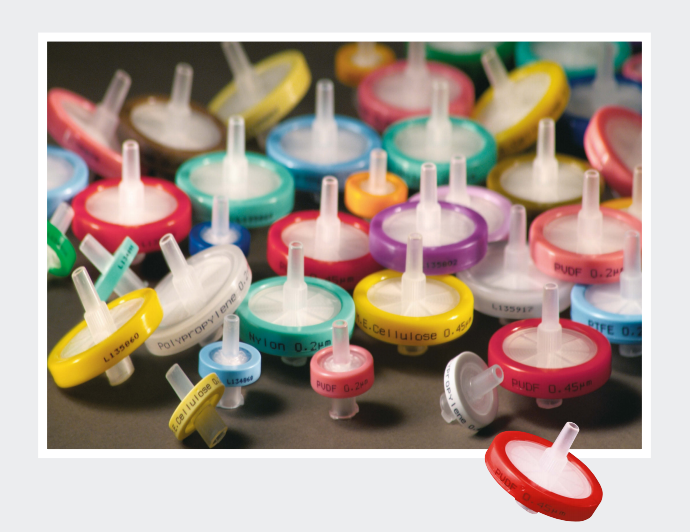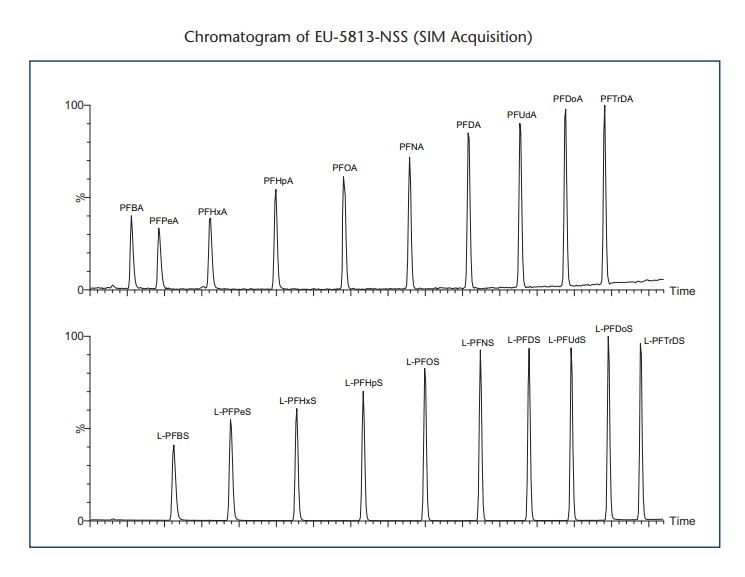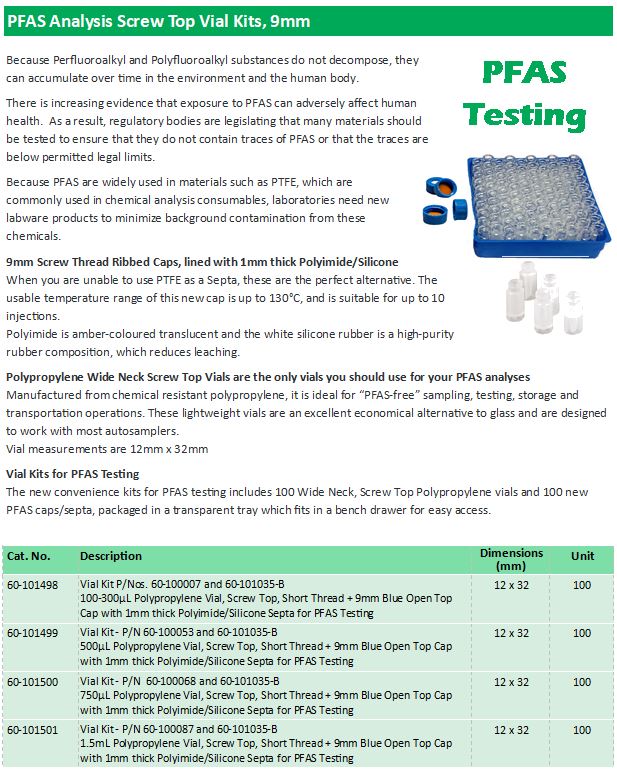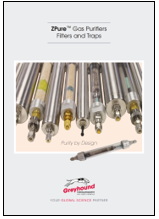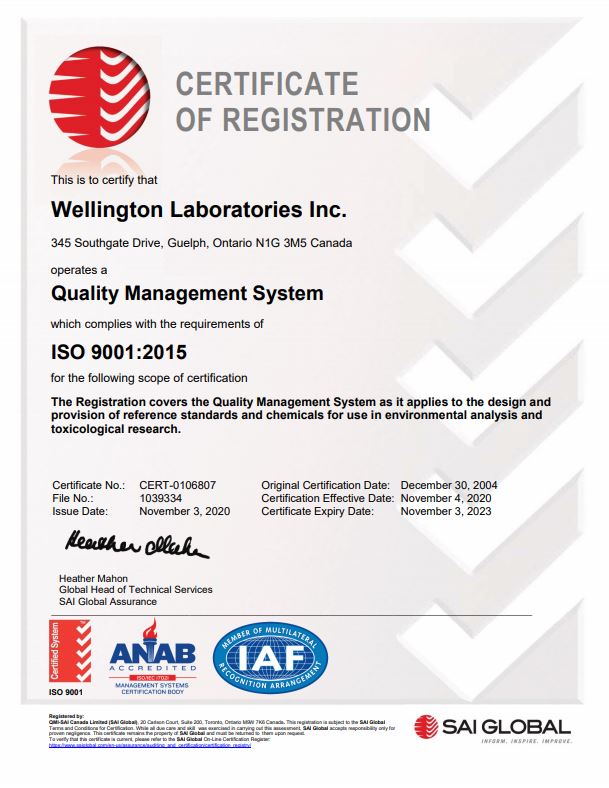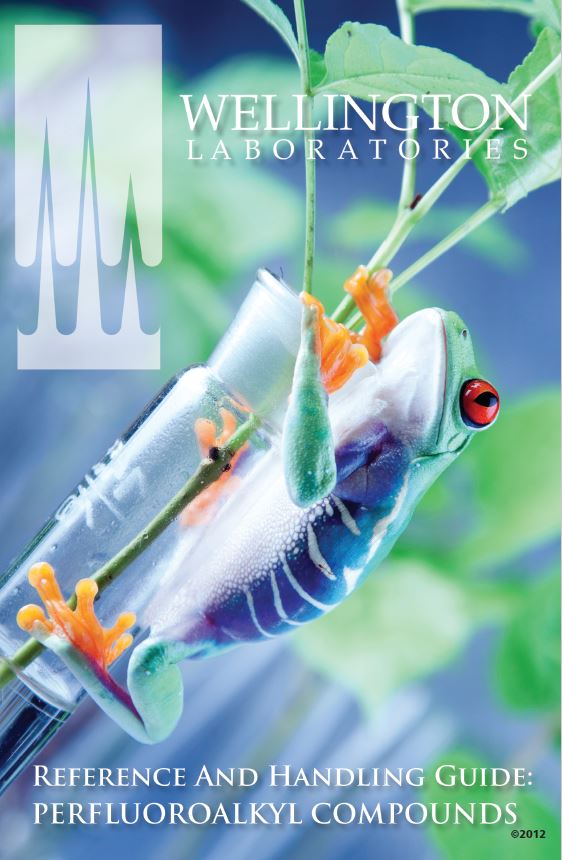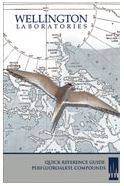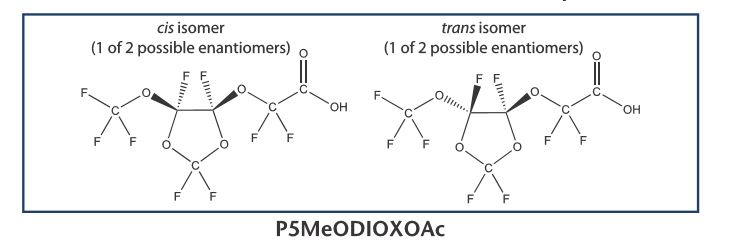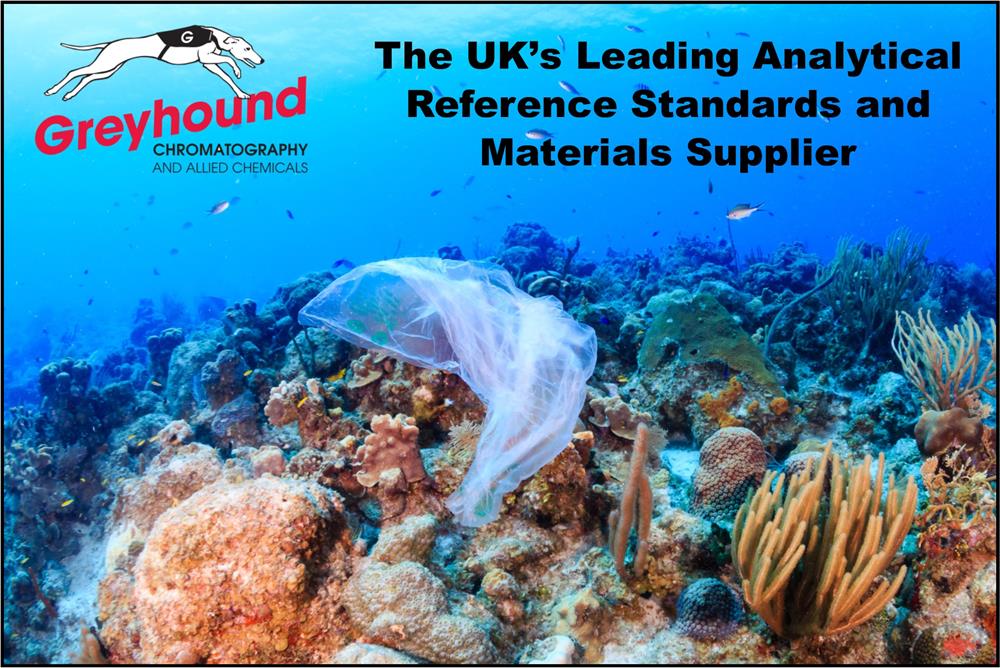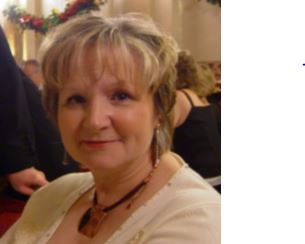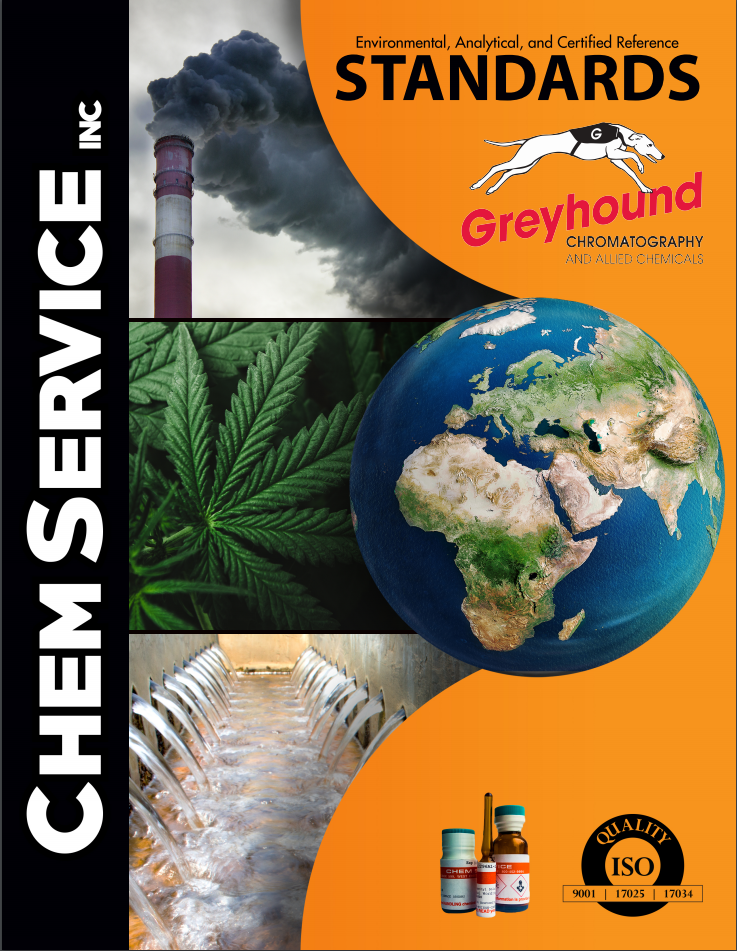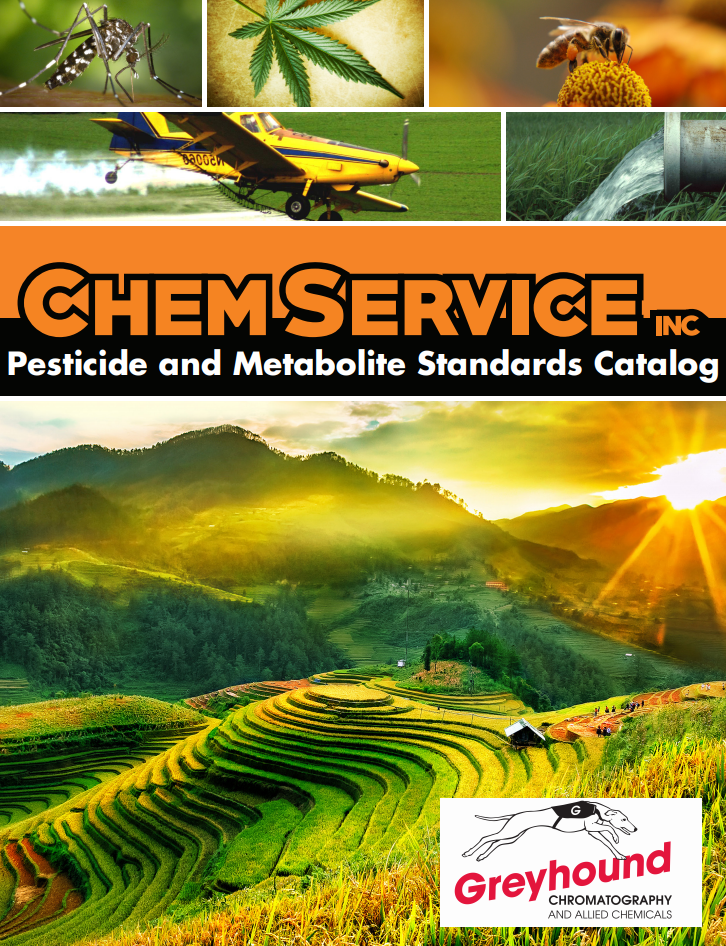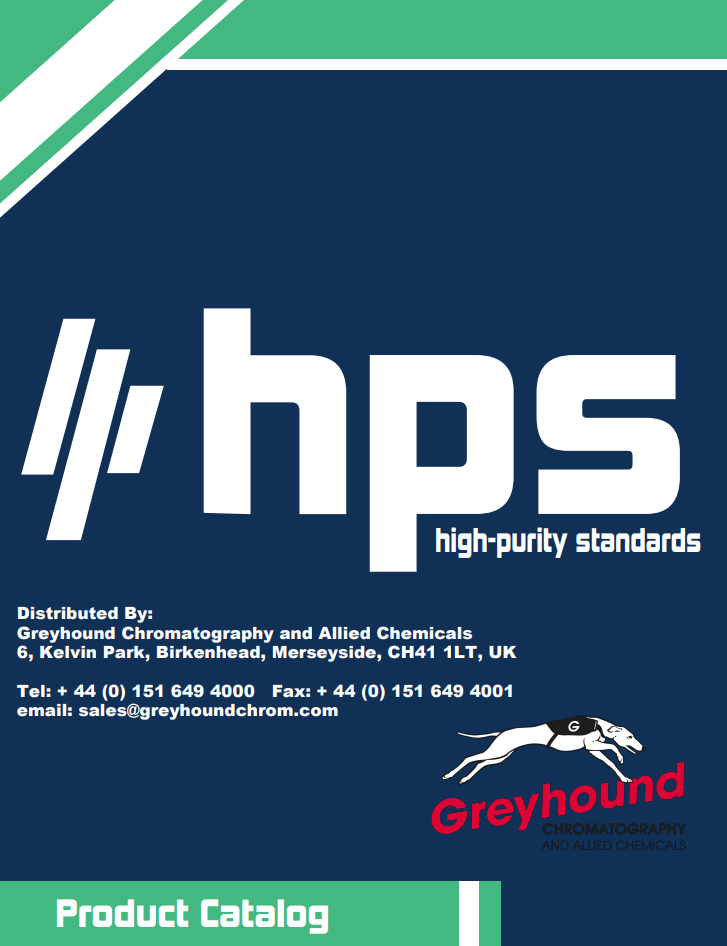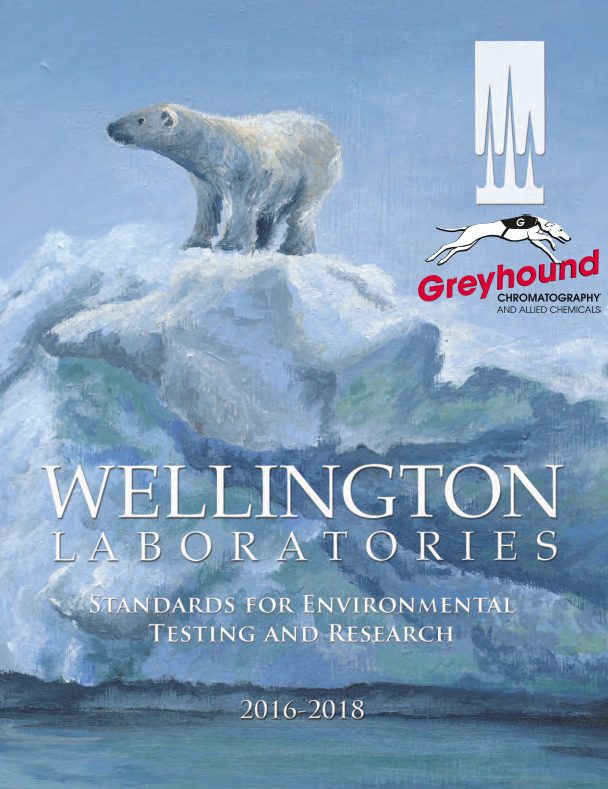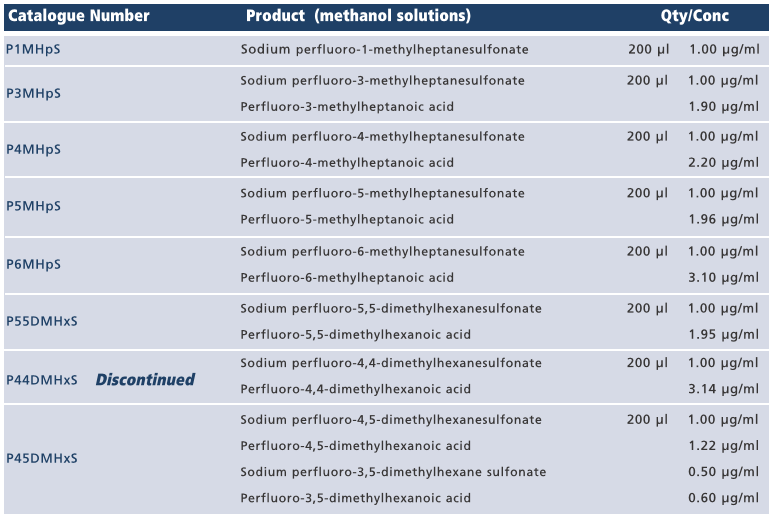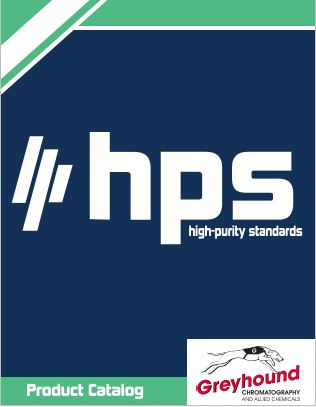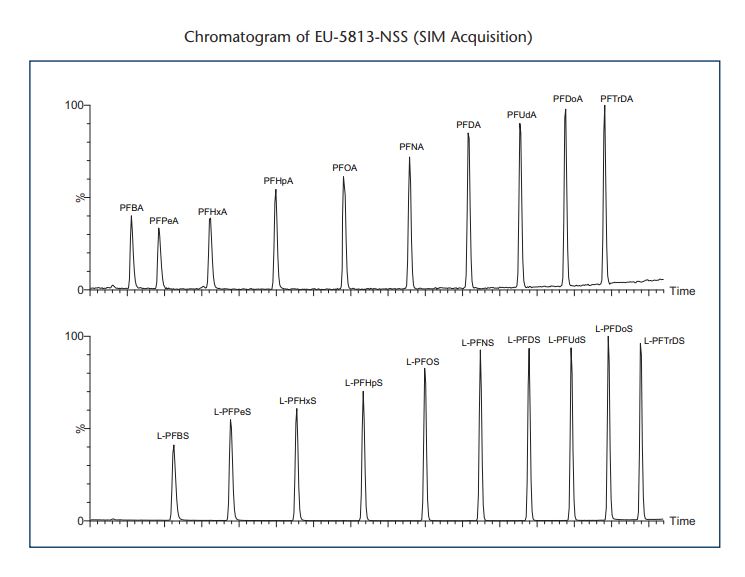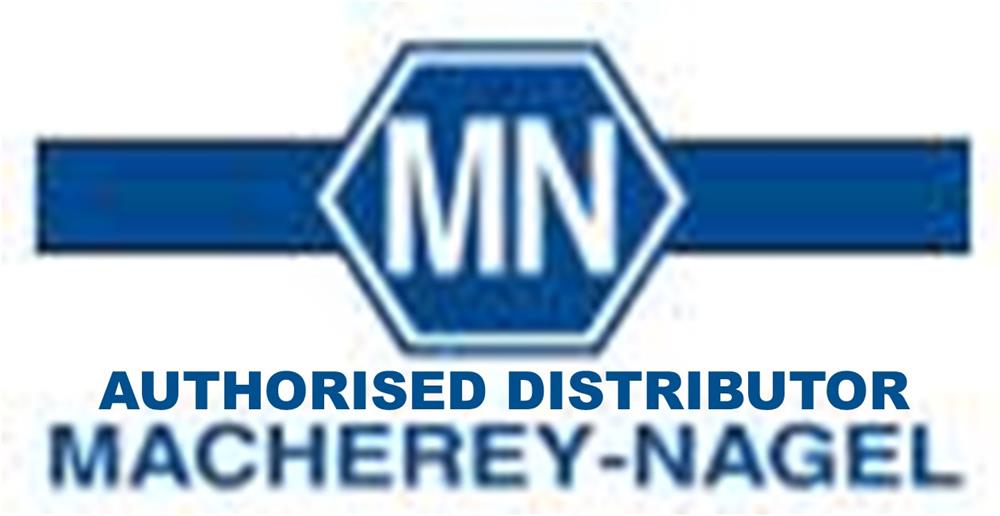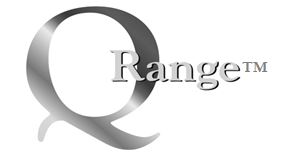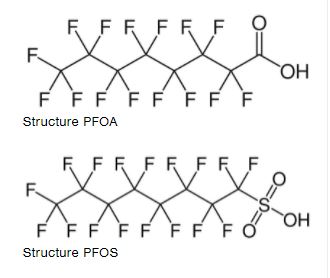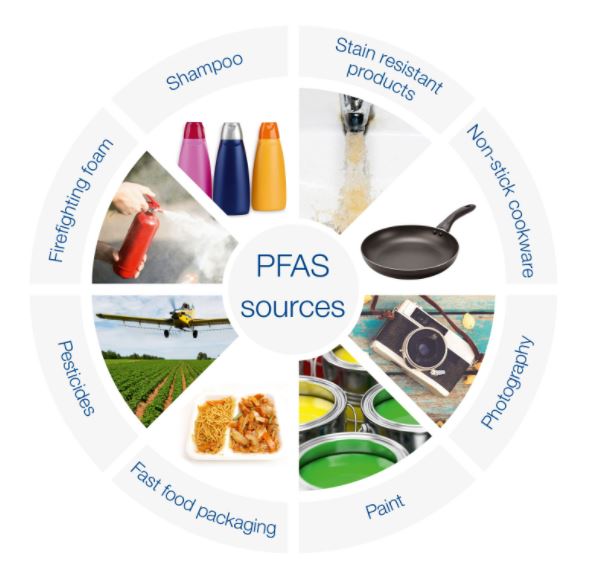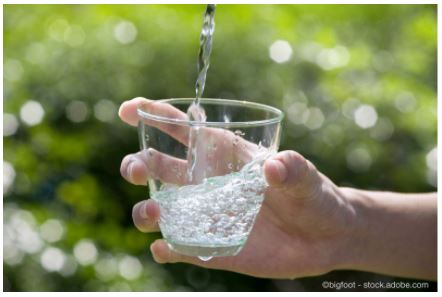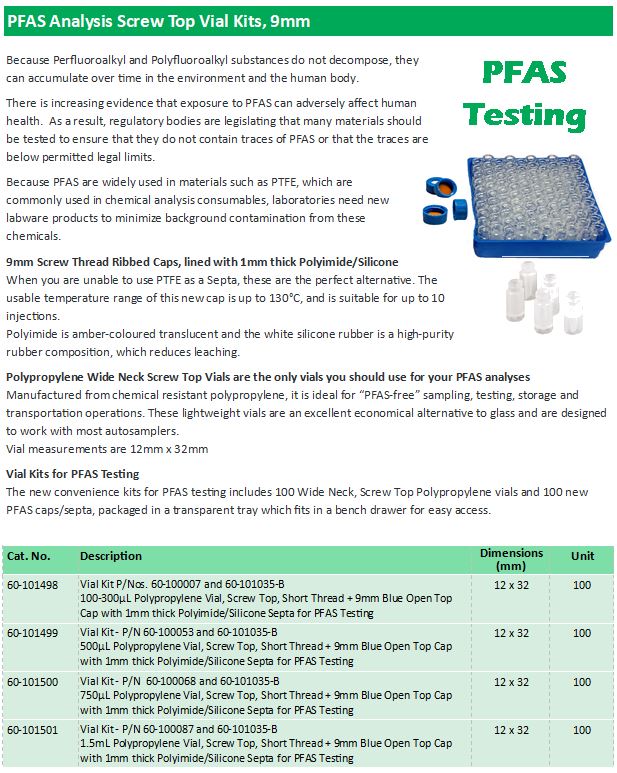1,3,6,8-Tetrabromo-9H-carbazole Certified Reference Standard Cas # 55119-09-0

Halogenated carbazoles have recently been recognised as emerging environmental contaminants. Although there exact source has not been determined, both modern and historic sources (LED manufacturing and halogenated indigo dyes respectively) have been suggested. Since certain halogenated carbazole congeners can be lost during acid silica clean-up, it is very important that reference standards be used to monitor recoveries when processing samples.
1,3,6,8-Tetrabromo-9H-carbazole Certified Reference Standard - Buy online HERE
For over 30 years Greyhound Chromatography has been supplying high quality Chromatography consumables to laboratories around the world. Greyhound’s extensive range covers all areas of Environmental, Petrochemical, Food, Forensics, Chemical and Pharmaceutical analysis. Backed by a highly experienced technical services team, Greyhound is the preferred source amongst today’s analysts.
Greyhound Chromatography is pleased to supply Wellington Laboratories Certified Reference Standards and Materials to Research and Analysis laboratories worldwide.
You May also be Interested in
Agilent Certified, pre-assembled screw top vial pack, 2 mL, clear vials, PTFE/red rubber septa, blue caps
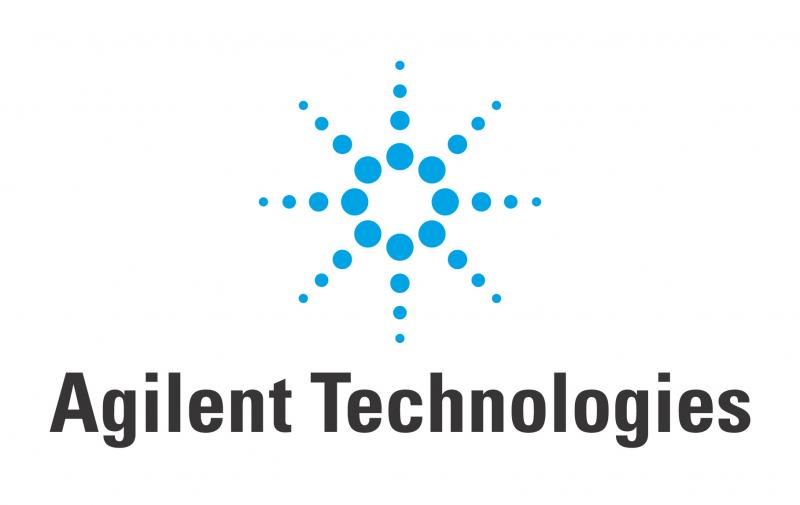
Genuine Agilent Part: 5182-0553
Description
Agilent Certified, pre-assembled screw top vial pack, 2 mL, clear vials, PTFE/red rubber septa, blue caps, 100/pk
Agilent Flash lamp for G1321A

Genuine Agilent Part: 2140-0600
Description
Agilent Flash lamp for G1321A fluorescence detector
Agilent Snap top vial, 2 mL, amber with write-on spot

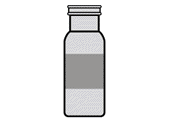
Genuine Agilent Part: 5182-0545
Description
Agilent Snap top vial, 2 mL, amber with write-on spot, 100/pk
View the full range of Greyhound Syringe Filters
Regenerated Cellulose Syringe Filters
Q-Fil Certified Syringe Filters
Q-Fil Certified Syringe Filters set the new Quality standard for today’s laboratory syringe filters Manufactured from the highest quality medical grade high density polypropylene, Q-Fil Certified Syringe Filters provide excellent chemical compatibility with acids, alcohols, bases, ethers, glycols, ketones and oils, with maximum operating temperatures of 135°C.
Every colour-coded filter is printed with the individual batch number, details of the membrane material and its pore size, on the outside rim of the filter, making them unique for traceability, GLPs and validation purposes.
Why filter your samples for HPLC?
• To protect the HPLC column, the column inlet frits and capillary columns against blockage (plugging) caused by particulate matter in the sample
• To protect injection valves from damage caused by scratching and wear of the valves internal components, caused by harmful particulate matter in the unfiltered sample, thereby reducing instrument downtime.
About our Quality Control procedures
• Every batch of filters is tested by an independent laboratory to ISO 17025 quality procedures
• Every individual Q-Fil Certified Syringe Filter is visually inspected to ensure it meets our manufacturing and quality control specifications
• Samples of all our syringe filters and their respective raw technical data are stored for a period of 5 years from the date of manufacture for future reference
• Each batch of filters is tested prior to release for
- External Dimensions
- Bubble Point
- Burst Pressure
- Filter Integrity
- Water Flow Rate
- UV Extractables and compliance with all technical procedures
Why use Greyhound Q-Fil Certified Syringe Filters?
• Q-Fil Certified Syringe Filters are manufactured in compliance with ISO 9001:2000 quality procedures
• Every box is supplied with a Certificate of Analysis and Conformance to guarantee its batch to batch quality and performance
• The unique encapsulating process developed for these filters, forces the sample to pass only through the membrane, thus avoiding the possibility of leaks or contamination
• Available in the most popular sizes, porosities and membrane types
• Excellent resistance to all routinely used HPLC solvents
• Filter housings are manufactured from high density medical grade polypropylene
• Extremely low level of extractables for highly sensitive work
• Luer connections fully comply with ISO 594-1
• Filters are available with standard and ‘SlimTip’ sized outlets
Selecting the right Q-Fil Certified Syringe Filter
• Choose the size of filter based on the volume of sample to be filtered
• Choose the filters porosity based on the size of the potential particulates in the sample. It is important to be aware that the finer the porosity of the membrane the greater the pressure will be required to pass the sample through the filter. A sample containing large quantities of particulates is best filtered using a filter with a built-in glass fibre pre-filter
• Choose the type of membrane based on the solvent being filtered.
Filter Sizes
All our filters have female Luer Lock inlets and are available in three diameters -
25mm Diameter
Designed for large sample volumes or solvent filtration
Wide cross sectional area 3.55cm2
Maximum filtration volume >10ml
Maximum operating pressure 550 Kpa
13mm Diameter
Suitable for most applications
Filtration area of 0.95cm2
Maximum filtration volume 1 to 10ml Maximum operating pressure 750 Kpa Now available with ‘SlimTip’ (ST) outlet
4mm Diameter
Suitable for most applications Ideal for small samples <1ml Pore sizes of 0.20µm and 0.45µm
SlimTip Filters (ST)
13mm diameter syringe filters are now available with the new ‘SlimTip’ outlet for direct filling of microvials.
Pore Sizes
Q-Fil Certified Syringe Filters are available in 0.20µm and 0.45µm pore sizes. The 0.20µm filters remove the smallest particulates whilst the 0.45µm filters are designed to remove particulates which would be detrimental to most analytical columns.
Pre-filters (page 6) have a glass microfibre membrane which is chemically inert and resists most solvents. Q-Fil glass microfibre pre-filters are recommended for removing large particulates from the sample and are ideal for dissolution tests.
Glass microfibre membranes are also available mounted before the microporous filter membrane in the polypropylene housing. The glass pre-filter removes the larger particulates and prevents premature clogging of the filter.
Wellington Laboratories Catalogue 2021 - 2023
Wellington Laboratories is pleased to announce the long-awaited release of their latest catalogue which contains the most up-to-date-listing of Wellington's Certified Reference Standard Solutions, Solution/Mixtures and Calibration Sets. Below you will find a selection of new products introduced in this new catalogue. Amongst the new products on offer you will find a comprehensive calibration set for polychlorinated naphthalenes (PCNs), native and mass-labelled PCN Support Solutions and additional individual organochlorine pesticide (OPC) standards.
Wellington Laboratories also continue to offer most of the products that were listed in their previous catalogue as they have remained relevant for environmental analysis and are frequently requested.
NEW ADDITIONS TO WELLINGTON LABORATORIES PRODUCT LIST
Alternative Method 16130 Calibration Set (16130CVS)
Mass-Labelled PCDD Window Defining Mixture (MD5CWDS)
Mass-Labelled PCDF Window Defining Mixture (MF5CWDS)
35 Individual Native OCP Standards
24 Mass-Labelled OCP Standards
PCN Calibration Set (PCN-CVS-A) & Support Solutions
27 Individual Native PCN Standards
14 Mass-Labelled PCN Standards
and more .........
Greyhound Chromatography is pleased to represent Wellington Laboratories throughout Europe and the Middle East. Our Sales team will be delighted to deal with your enquiry for Wellington products. Email: sales@greyhoundchrom.com
Full Range of Wellington Laboratories' Products
PFAS and Other Toxic Forever Chemicals in Drinking Water
For over 30 years the European Union have worked tirelessly to protect the integrity of our drinking water. EU officials have recently reached a provisional agreement to update the Union's 1998 Drinking Water Directive to tighten up the permissible limits allowed for both PFAS and several other drinking water contaminants, including bisphenol-A, microplastics, lead and chromium. The at the time of writing the European Parliament and Council are still to formally approve the proposal.
European drinking water standards currently far exceed the standards set in the United States but this is a changing picture as state by state new instances of contaminants are emerging. Currently, the U.S. Environmental Protection Agency has only issued a nonenforceable health advisory of 70 ppt for PFOA, formerly used by DuPont to make Teflon, and PFOS, formerly an ingredient in 3M’s Scotchgard. Those compounds are no longer manufactured in the U.S., but they and other PFAS contaminate the drinking water for an estimated 110 million Americans. PFOA, PFOS and some other PFAS chemicals have been linked to cancer, thyroid disease, reproductive and immune system problems, and other health harms.
The european Parliament and the Council of the European Union have released new requirements for the analysis of per- and perfluoroalkyl substances (PFAS) in water intended for human consumption (5813/20). This amendment to Council Directive 98/83/EC included perfluoroalkanesulfonates that are not commercially available. In response to this Wellington Labroatories, Canada, is pleased to announce that its chemists have synthesized, purified, characterized and prepared accurate certified reference standards of the required substances: sodium perfluoro-1-undecanesulfonate (L-PFUds) and sodium perfluoro-1-tridecanesulfonate (L-PFTrDS). Wellington Laboratories have also prepared a native solution/mixture (EU-5813-NSS) that contains all of the PFAS listed in the drinking water directive (5813/20) for your convenience. This solution/mixture can be used in conjunction with two of Wellington's existing mass-labelled PFAS mixtures to easily prepare a calibration set for quantification.
Suggested extraction standard mixture : MPFAC-C-ES
Suggested injection standard mixture: MPFAC-C-IS
Q-Range PFAS Analysis Screw Top Vials Kits, 9mm
Please visit our website www.greyhoundchrom.com to view all available vials and accessories.
Ordering Information:
You can order on-line (registration required), www.greyhoundchrom.com
or by telephone, +44 (0)151 649 4000 - Sales Department
Request a quotation: sales@greyhoundchrom.com
General Information: info@greyhoundchrom.com
CONTACT US
Tel: +44 (0) 151 649 4000
Email: marketing@greyhoundchrom.com
FOLLOW US
YOU MAY ALSO BE INTERESTED IN OUR NEWSLETTER


